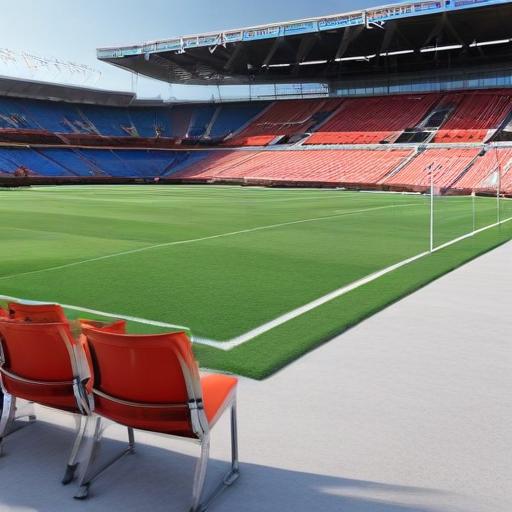Everton’s new Hill Dickinson Stadium is edging closer to its competitive bow, with the 52,769-capacity waterfront venue hosting its final test event and preparing to welcome Brighton & Hove Albion this weekend. The 1-0 defeat to Roma in a closely watched friendly marked a milestone for the project and for those who have spent years turning the plans into a tangible home for the club.
For Alix Waldron, Everton’s director of new stadium development, the Roma night carried particular significance. A former season-ticket holder who has been at the heart of the project since planning began in 2018, Waldron felt the moment in the control room when real bodies finally filled the seats that had been vacant for so long. “An, ‘Oh wow, it works — everyone’s here and you can hear Z Cars’,” she recalled, describing a hair-raising moment that underscored the journey from blueprint to built reality.
Her role has been hands-on from the start. Waldron worked closely with finance director Aidan Miller and has been a constant link for design and operations teams, coordinating with contractors and consultants on everything from fit-out to snagging. The week of the Roma match was a sprint to finish the internal hospitality fit-outs and to move the operations team from the temporary media lounge into a more permanent setup, a process that required late-night deliveries and a flurry of box-breaking activity to get the lounge ready.
Today, Waldron’s matchdays unfold in the Hill Dickinson Stadium control room, tucked in the north-west corner alongside the safety lead and the police commander. Much of the day’s communication happens by radio, with Waldron and her team ensuring systems are running smoothly and problems are resolved in real time. The pitch is visible from the control room, though the atmosphere on matchdays is different from Goodison Park’s old roar — a factor the team has had to adapt to as they fine-tune the venue’s operations.
This shift from a traditional, buzzing stadium ambience to a more controlled, instrumented environment is part of the practical side of opening a new ground. The work is high-pressured and highly logistical, including addressing issues such as toilet blockages or spills, with matchday shifts running around 13 hours as teams push to iron out every last detail before the first league game.
Everton emphasize the new stadium’s potential beyond league fixtures. The Hill Dickinson pitch, five metres longer than Goodison’s, measures 105 meters by 68 meters in line with Premier League and FIFA guidelines. The move allowed for a larger, modern pitch environment, while the venue’s design includes technologies to manage conditions. The playing surface is heated and cooled via an underneath system, a step up from the Goodison setup, with the pitch prepared on a cycle that typically centers around a year-long maintenance plan. Recent work has included aerating and refining the surface in preparation for live action, with a view to delivering a high-quality playing surface for matchday.
Accessibility and inclusivity are high on the stadium’s agenda. Everton pride themselves on amenities that set a benchmark for the Premier League. The club has the most wheelchair spaces in the top flight and has introduced a purpose-built sensory box and sensory room to support disabled fans. A British Sign Language interpreter is on hand, and audio-described commentary will be available for blind and partially sighted supporters. Accessibility lead Christopher Massam notes that the project is about more than a tick box; it’s about delivering a meaningful, lasting experience for families and fans who may have previously found stadium visits challenging.
The broader experience also includes Everton’s tours and events team, led by Elle Barnes-Reen. Planning began years ago, drawing on Liverpool’s maritime heritage and lessons from other stadia. Barnes-Reen’s own connection to Goodison runs deep; she began offering tours with her late grandmother and feels a sense of continuity as the club moves to its new home. The Roma game, watched by many who have poured time and energy into the project, brought a tear to her eye as finishing touches take shape and Evertonisation of the venue accelerates.
Looking ahead, the Hill Dickinson Stadium will host not only Premier League football but also other high-profile events. The venue is being pitched as a versatile hub, including the potential for a Rugby League Ashes Test between England and Australia in November and Euro 2028 fixtures. The team’s focus remains on delivering the best possible matchday experience — from the most accessible stadium in the country to a highly tuned operational backbone that supports smooth, safe, and enjoyable events.
Positive energy surrounds the project as staff reflect on the transition from Goodison to the new docks location. Waldron describes a real sense of pride in contributing to something that will, she hopes, support years of future success for the club and provide a home that generations of fans will remember. The move has not been without its emotional weight, but the prevailing mood is one of optimism and purposeful preparation, with the stadium already feeling like home as the finishing touches fall into place.
Summary: Everton’s Hill Dickinson Stadium is ready to welcome competitive action after a series of test events, with a focus on an enhanced matchday experience, top-tier accessibility, and a versatile calendar of future events. The project’s leaders speak of pride, family involvement, and the sense that the city and club have a new, enduring home on the waterfront.
Additional notes and value add:
– The stadium’s accessibility features and sensory facilities could become a model for future grounds seeking to broaden fan inclusion.
– The combination of advanced pitch technology and climate control aims to provide a consistently high-quality playing surface in varying weather conditions.
– The opening sets the stage for a transition that blends heritage with modern technology, offering opportunities for tours, heritage storytelling, and community engagement alongside top-tier football.
